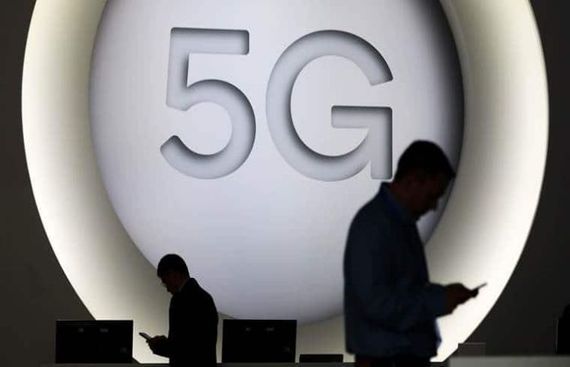Decoding 5G: What does this future tech means for you

With 75 billion Internet of Things (IoT) devices expected to be in place by 2025, the world is at the cusp of experiencing a technology that will change the way live today.
With 5G commercial networks being switched on, the first use cases are enhanced mobile broadband, which will bring better experiences for smartphone users, and fixed wireless access, providing fiber speeds without fiber to homes.
Being able to download a full-length HD movie in seconds and share your wow-moments with friends -- that's just the beginning.
Commercial 5G networks are starting to go live across the world.
"The true value of 5G is the opportunity it presents for people, business and the world at large: industries, regions, towns and cities that are more connected, smarter and more sustainable," says Ericsson which is leading 5G research and deployment globally.
Although we have some idea how 5G smartphone will look like, the technology as a whole is not yet fully understood by billions of people who are set to reap the benefits when it explodes - at home, office or on the go.
In 2020, worldwide 5G wireless network infrastructure revenue will reach $4.2 billion, an 89 per cent increase from 2019 revenue of $2.2 billion, according to Gartner.
Additionally, investments in 5G NR (New Radio) network infrastructure will account for 6 per cent of the total wireless infrastructure revenue of communications service providers (CSPs) in 2019, and that this figure will reach 12 per cent in 2020.
5G New Radio (NR) is the global standard for a unified, more capable 5G wireless air interface.
"It will deliver significantly faster and more responsive mobile broadband experiences, and extend mobile technology to connect and redefine a multitude of new industries," say Qualcomm, another 5G technology leader.
5G Services have already begun in the US, South Korea and some European countries, including Switzerland, Finland and the UK. CSPs in Canada, France, Germany, Hong Kong, Spain, Sweden, Qatar and the United Arab Emirates have announced plans to accelerate 5G network building through 2020.
Although consumers represent the main segment driving 5G development, CSPs will increasingly aim 5G services at enterprises.
According to Borje Ekholm, President and CEO of Ericsson, the company will switch on 5G globally in 2019, backed by a strong, secure and available portfolio.
"Consumers and enterprises are waiting for 5G," Ekholm said, adding that the US and Asia are leading in 5G development.
5G will improve your network connection dramatically.
"You won't have to deal with disruptions when sharing videos from crowded arenas, nor will high-quality videos on your newsfeed cause frustration from all the buffering," says Ericsson.
More efficient capabilities and vastly increased capacity means you'll enjoy better performance than ever before - 100 times faster data rates, supporting instant access to services and applications; network latency significantly reduced to 1-10 ms (milliseconds) and network slicing facility, making it possible to dedicate a unique part of a 5G network for a service.
The introduction of 5G will make it possible for communications service providers (CSPs) to improve their business in various ways.
"Our economic study of enhanced mobile broadband shows that evolution to 5G will enable 10 times lower cost per gigabyte than current 4G networks," Ericsson notes.
Meanwhile, Fixed Wireless Access (FWA) can provide connectivity for households and businesses.
Enabling new use cases, new services new business models and new eco-system, service providers can benefit from up to $619 billion market opportunity globally in 2026.
For the world-at-large, 5G is enabling a new wave of innovation.
It has the potential for changing the world, further powering the trends in tech today: IoT (Internet of Things), AI (Artificial Intelligence), AR (Augmented Reality), autonomous vehicles and many more.
However, with billions of devices in action, a growing strain will be placed on requirements of wireless networks. Contemporary WiFi and cellular networks won't be enough to support the influx of IoT devices.
The ongoing 5G research, however, will soon address this too.
Read More News :
